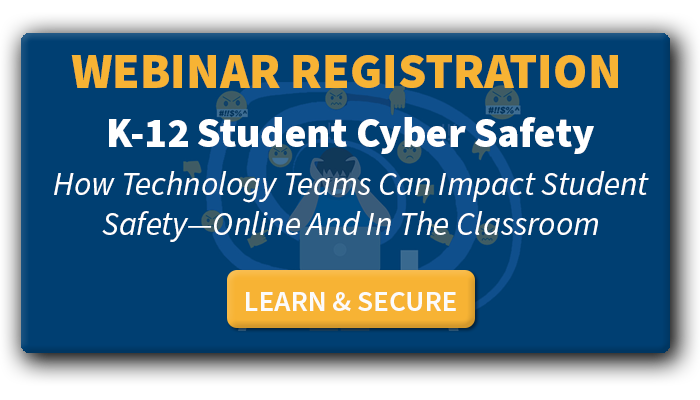How District IT Teams Can Help Identify Cyberbullying And Potential School Violence Signals In School Technology
Research shows that there is a relationship between bullying, cyberbullying, and school violence. For over 20 years, the U.S. Department of Homeland Security and the U.S. Secret Service has analyzed and published reports to prevent school violence. The most recent report, 2021, Averting Targeted School Violence, A U.S. Secret Service Analysis of Plots Against Schools, analyzes the myriad of reasons why students planned attacks against schools.
Their research indicates that the number one reason why students planned and/or carried out school attacks was grievances against others, cited 45% of the time. Of those cases, bullying was identified as the cause of the grievance in 21% of school violence plots.
The report describes one situation where two 13-year-old boys planned to attack their middle school with guns and bombs. The boys created a “kill list” of the people who had bullied them for years. The list included specific classmates and the majority of the school’s football team members.
Here, we’re exploring cyberbullying as one of the school violence early warning signs. But, it’s important to recognize that reducing cyberbullying and bullying is critical. Kids who are bullied can develop adverse physical, academic, social, emotional, and mental health issues. Kids who bully often engage in violence and other risky behaviors far past their adolescence. Even kids who merely witness bullying experience negative effects.
Cyberbullying is a School Violence Early Warning Sign
Cyberbullying is one of the types of bullying students encounter in schools. It’s not practical to separate in-person and cyberbullying. Both types are done for the same reasons and have the same negative effects. Further, today’s students combine their real lives with their online lives much more than in past generations. So if you see bullying online, there’s an excellent chance that more bullying is also happening offline—and vice versa.
Students who are bullying others, or are being bullied, are more likely to be experiencing:
- Physical or sexual abuse at home or other places in their personal life
- Drug and/or alcohol abuse and addiction
- Self-harm behaviors and thoughts of suicide
- Depression and anxiety
- Eating disorders
As these issues pile up, some students who have mental illness and unrelenting bullying decide to retaliate.
Cyberbullying Monitoring – What to Look For
District IT teams have an important contribution to make when it comes to cyberbullying and school violence. Understanding the types of school violence to look for is important to help your team take an active role in identifying what potential problems look like in school technology.
Cyberbullying and other toxic online behaviors aren’t just happening on social media or gaming platforms. It’s also happening when students use apps provided by the school. IT admins we’ve worked with have been shocked by the content they found in places such as Google Drive, Docs, Chat, and Gmail.
Cyberbullying detection in schools should include looking for toxic content in all shared drives. That content could be lurking in text files, images, emails, or chat apps and can include:
- Insults and bad language
- Explicit and/or sexual language or images
- Content that criticizes or makes fun of a group of people
- Talk that encourages violence against others or contains threats
- Anything that indicates students thinking about or promoting self-harm or suicide
Automated systems like ManagedMethods are available to help do the monitoring for you. Your cyberbullying detection tool will send an alert when it finds something that meets your criteria. At that point, you can find the person who created the content and determine who had access to it.
It shouldn’t be the responsibility of the IT team to resolve each issue. Rather, you can gather the information and pass it along to resources such as school principals and counselors. Be sure to develop a process for doing so. Make sure that everyone is aware of the next steps and their role in the process.
Cyberbullying and school violence are closely connected, and every effort should be made to reduce both.

![[FREE WEBINAR] Student Cyber Safety in Schools. REGISTER HERE >>](https://no-cache.hubspot.com/cta/default/6834707/5cd0a157-352c-458b-9676-0ad9bb75645a.png)
